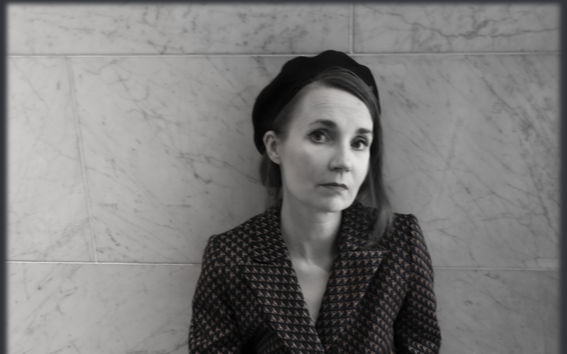Hanna-Kaisa Korolainen: ‘Inspiration is not an uncontrollable force, but an active part of the creative process’

What is your research about?
‘In my research, I explore the relationship between the source of inspiration and the practitioner, the differences between inspiration and copying, and the idea of shared authorship. I aim to concretely clarify what inspiration and its role in the creative process is, both historically and in a contemporary context. The practitioners’ perspective felt important, because I wanted to reflect myself and my own artistic practice to the existing information. My dissertation focuses specifically on my own artistic process and its outcomes.
I got a spark to write my dissertation on inspiration as there was not much of available literature, especially not produced by the practitioners themselves. Moreover, the literature I could find did not seem to give a concrete answer to what inspiration is, where to find it or what its role in the creative process is.
Inspiration has historically been, and may still be, regarded as a rather mysterious phenomenon, a necessary characteristic of 'good' art and artists, and one which the practitioner must in most cases passively await. It has also been thought that an artist is 'born' with a gift of inner inspiration – and cannot become a good artist without it. But for the creatives of today, sources of inspiration mean something else – friends or confidants guiding and accompanying the creative process.'
What is important about it?
‘Inspiration is not a mysterious, uncontrollable force that needs to be waited but can and should be actively sought. Inspiration plays an active role in the creative process. It is like a close collaborator and functions in a dialogue with the author – dialogue can also be considered as a conversation with oneself. Inspiration is a living and ever-changing element that allows the creative process to evolve each time into a different, unique adventure.
Hanna-Kaisa Korolainen‘Inspiration is not a mysterious, uncontrollable force that needs to be waited but can and should be actively sought"
I have been teaching the creative process at Aalto University's Department of Design since 2016, and I have discovered that working with inspiration can be taught and learned: one has to actively move towards it, and certain methods can help in the process. I explored these methods in more detail through my own artistic process which led to the key findings of the dissertation.
Inspiration is an important component of the creative process, which fuels and walks alongside it. Source of inspiration can be something fascinating, an important finding or an injustice, even a desire to change something. One must be committed to the process, and when inspiration and its role become understood more profoundly, the connections between one’s artistic practice, history, surroundings, and many other things can be perceived. New meanings emerge and creative practice no longer feels like a lonely and hard work.’
What can it lead to?
‘My research is aimed at creative practitioners, readers interested in inspiration in general, and I believe it will also be of interest to the international field of artistic research. The information from the study can be widely used in art and design education, as it provides a reflection point for other creatives in defining what inspiration is, where to find it and presenting different ways of working with inspiration. In this way, knowledge is shared within the field.
I hope my research will contribute to the understanding that inspiration can be learned and worked consciously with. It can help, give tools, and bring clarity when struggling amidst often fuzzy creative processes.
There are so many inspiring things in the world – seeds of creativity. It's also important to realize that inspiration doesn't always originate from myself – what if I don't have a role in it? On the other hand, people are inspired by each other and their artistic practices. The longer the creative career, the more inspiration can come from one’s previous artistic career or ideas. Creative work contributes to fueling future creative processes. The creative worker is only one part of the process – the work is always a collaboration between many elements and the world.’
Korolainen defended her doctoral thesis The Making of Inspiration - Sourcing inspiration from Monet to Warhol and beyond at Aalto University 20 May 2022.
Read more news

DeployAI Partners Gather for Heart Beat Meeting in Helsinki
The European DeployAI project's partners gathered for the Heart Beat meeting hosted by Aalto University Executive Education in Helsinki.
Get to know us: Associate Professor Maria Sammalkorpi
Sammalkorpi received her doctorate from Helsinki University of Technology 2004. After her defence, she has worked as a researcher at the Universities of Princeton, Yale and Aalto.
Aalto computer scientists in ICML 2024
Computer scientists in ICML 2024